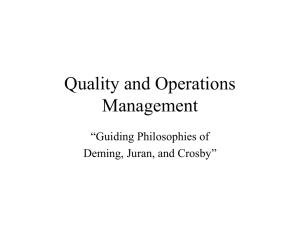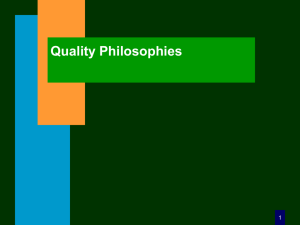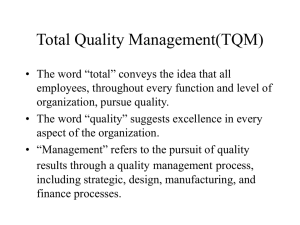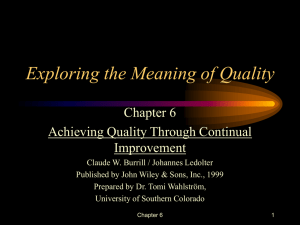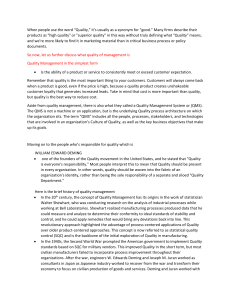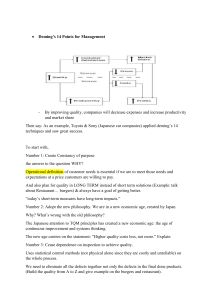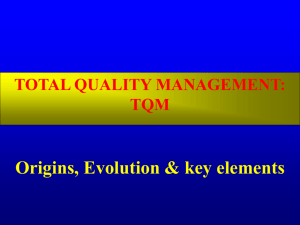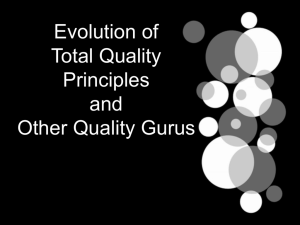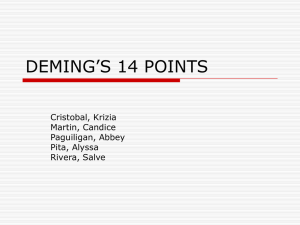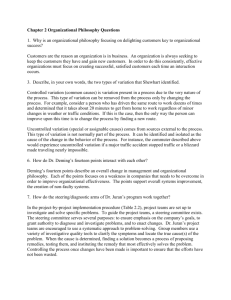Views of the Quality Gurus (Word)
advertisement
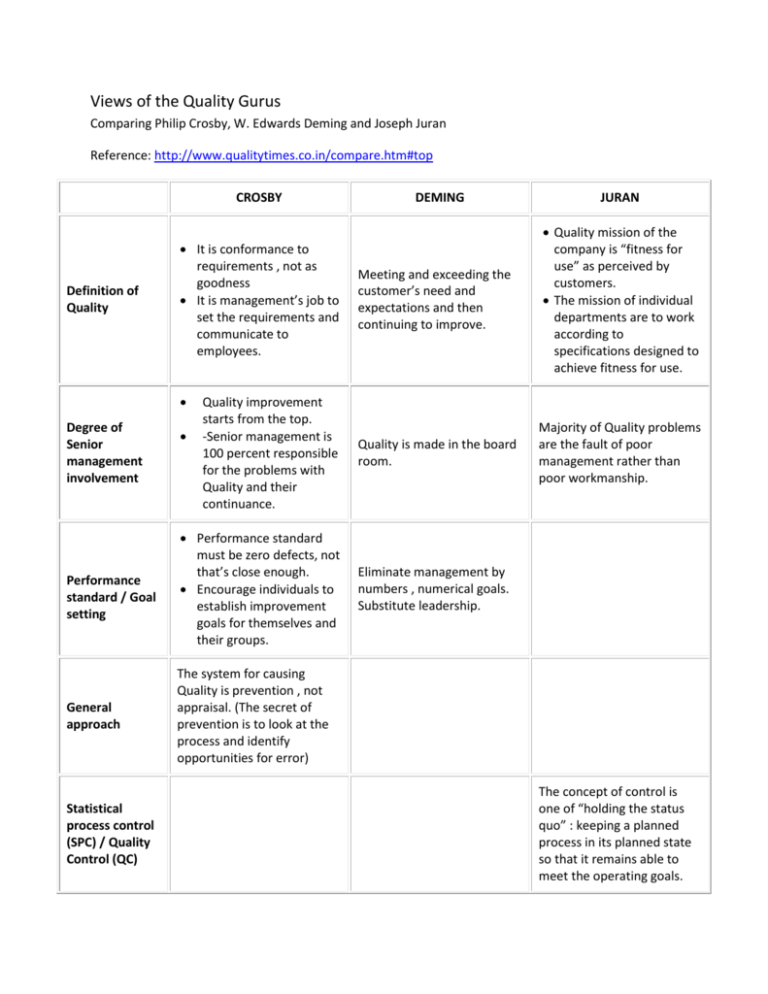
Views of the Quality Gurus Comparing Philip Crosby, W. Edwards Deming and Joseph Juran Reference: http://www.qualitytimes.co.in/compare.htm#top CROSBY Definition of Quality It is conformance to requirements , not as goodness It is management’s job to set the requirements and communicate to employees. Degree of Senior management involvement Performance standard / Goal setting General approach Statistical process control (SPC) / Quality Control (QC) Quality improvement starts from the top. -Senior management is 100 percent responsible for the problems with Quality and their continuance. Performance standard must be zero defects, not that’s close enough. Encourage individuals to establish improvement goals for themselves and their groups. DEMING JURAN Meeting and exceeding the customer’s need and expectations and then continuing to improve. Quality mission of the company is “fitness for use” as perceived by customers. The mission of individual departments are to work according to specifications designed to achieve fitness for use. Quality is made in the board room. Majority of Quality problems are the fault of poor management rather than poor workmanship. Eliminate management by numbers , numerical goals. Substitute leadership. The system for causing Quality is prevention , not appraisal. (The secret of prevention is to look at the process and identify opportunities for error) The concept of control is one of “holding the status quo” : keeping a planned process in its planned state so that it remains able to meet the operating goals. Improvement basis Quality improvement is built on getting everyone to do it right the first time (DIRFT) Quality improvement is a process, not a program, and it takes a long time for it to become a normal part of the scene. Put everyone in the company to work to accomplish the transformation. The transformation is every body’s job. Repeated use of PDSA cycle. Team work Management must break down barriers between departments. Each department must see other department as internal customer, when this is practiced the barriers begin to fall. Single sourcing of supply There should be a single supplier for any one item, on a long term relationship of loyalty and trust. Cost of quality Quality awareness Measurement of quality is the price of nonconformance, not indexes. Price of nonconformance is by counting everything that is spent if everything was not done right the first time. Companies should look at the total cost of product or service provided by others, and not just the purchase price. Accepting the lowest bid does not guarantee the lowest total cost. Share with employees the measurement of what nonconformity is costing to the company. Management must eliminate slogans, exhortations and targets asking for zero defects and new levels of productivity from the work force. Quality improvement is not firefighting, or removing a sporadic spike. More than that quality improvement raises quality performance to unprecedented or break through levels. All quality improvement takes place project by project. Cost of Poor Quality (COPQ) is the sum of all costs that would disappear if there were no quality problems. Quality improvement does not come free. Training Orientation to the concepts and procedures of quality Direct skill improvement Continual quality data communications. Training should be given on the job. Everyone should be trained in basic statistical methods. Training boosts morale because it provides workers with a greater sense of security and value and a lower stress level. Company culture The culture of the company is going to change only when all employees absorb the common language of quality and begin to understand their individual roles in making quality improvement happen. Leadership must be instituted. The aim of leadership should be to help people and machines do a better job. Drive out the fear so that everyone may work effectively for the company. Inspection / defect control Two factors cause defects or mistakes: Lack of knowledge and lack of attention. Cease dependence on inspection to achieve quality. Eliminate the need for mass inspection by building quality into the product in the first place. Operator errors can be reduced by: fool proofing, keeping people attentive, training, changing technology, improving communication, establishing accountability, removing the error-prone person and motivation.
